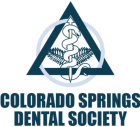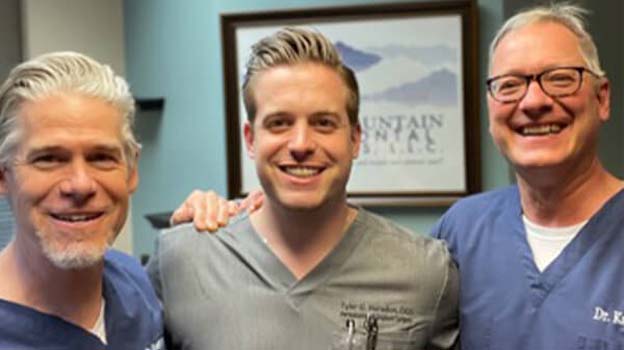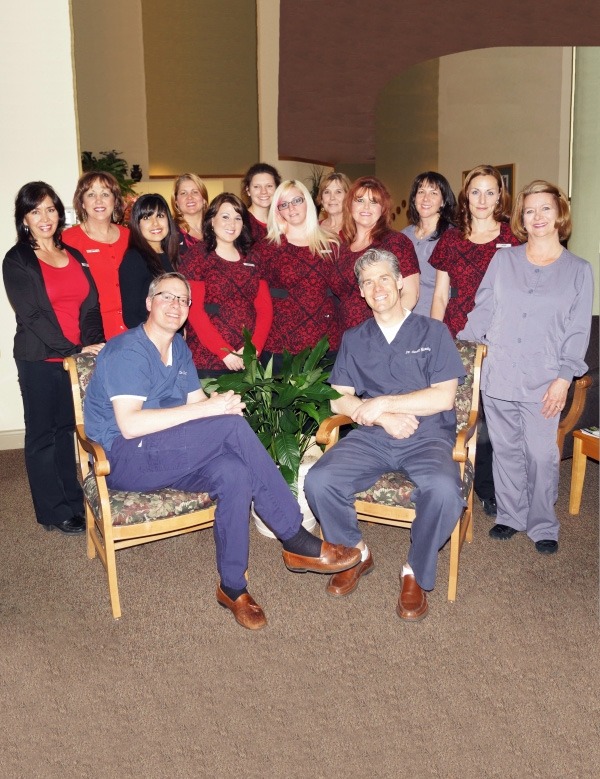Making sure our patients are well-informed and confident about their dental care and oral health is one of our top priorities. That’s why, if you have any questions or concerns, giving us a phone call is perhaps the best and fastest way to get the information you’re looking for. Still, some people prefer to research online or simply don’t have enough room in their schedule to reach out. Even so, our team has taken the time to collect and answer some of the most commonly asked questions from patients in Colorado Springs and the surrounding communities!
What is the Best Way to Find a Dentist Who Does Dental Implants?
If you’re looking to replace missing teeth, dental implants are a popular and effective option, but choosing the right professional for your treatment is important. Some dentists may only perform part of the process, which generally includes the restoration with a crown, bridge, or denture. Our periodontists in Colorado Springs can handle the entire process under one roof. The team consists of highly trained periodontists who are proud members of the American Academy of Periodontology and have undergone extensive advanced training in dental implants. If you’re considering dental implants with titanium posts to address tooth loss, consult our experienced professionals for a streamlined and comprehensive treatment experience.
How Do I Find the Best Place to Get Dental Work Done?
When it comes to finding an office to get dental care from, you’ll have to consider the factors that are most important for you. These can be a mixture of things such as insurance/payment and fees, hours, cleanliness, safety, credentials, and location. You should also know the kinds of dental services you’re looking for, such as whether you need wisdom tooth extractions or you want to get dental implants without having to visit different offices for them. Some practices, such as Rocky Mountain Periodontal Specialists, are better suited for certain treatments than others. Of course, you’ll also want to get familiar with your dental team to know how they interact with their patients. For instance, our team prioritizes personalized care so that every patient can undergo treatments specifically tailored to their dental needs, this way you can enjoy more comfortable and reliable care.
What Do You Do If You Can’t Afford a Periodontist?
Perhaps the best way to save money on periodontal treatments is good oral hygiene. Brush your teeth at least twice a day with fluoride toothpaste, and floss daily to remove plaque and food particles between your teeth and under the gumline. Use an antimicrobial mouthwash to reduce bacteria. Maintain a balanced diet rich in vitamins and minerals, limit sugary snacks, and stay hydrated. Avoid tobacco products, as they increase the risk of gum disease. Regular dental check-ups and professional cleanings are essential to remove tartar and detect early signs of periodontal disease. Pay attention to gum health, managing any symptoms promptly. Additionally, managing overall health conditions like diabetes can help maintain oral health.
What is Periodontal Disease?
Periodontal disease, or gum disease, is an infection of the tissues supporting your teeth, caused by plaque buildup. It progresses from gingivitis (red, swollen, bleeding gums) to periodontitis, where gums pull away from teeth, forming infected pockets that can lead to bone and tissue loss. Symptoms include red, swollen, or tender gums, bleeding during brushing or flossing, bad breath, receding gums, and loose or shifting teeth. Treatments range from scaling and root planing to surgical options. At Rocky Mountain Periodontal Specialists in Colorado Springs, we provide expert care to prevent and treat periodontal disease, ensuring your gums and teeth stay healthy.




























